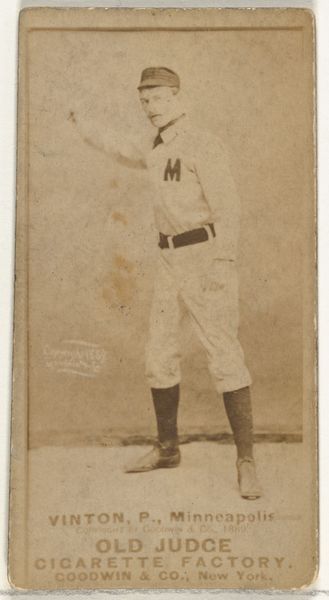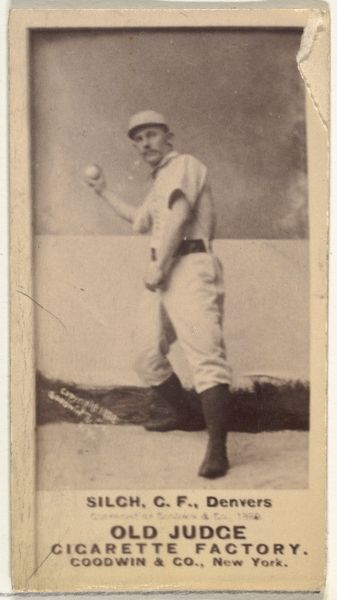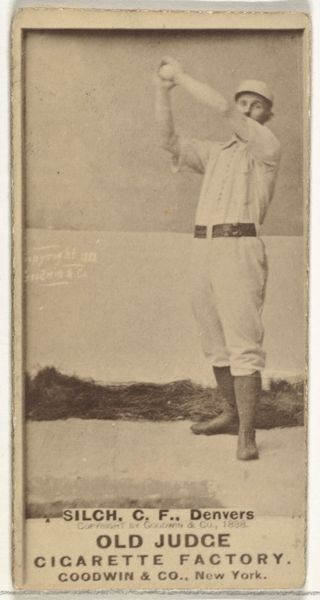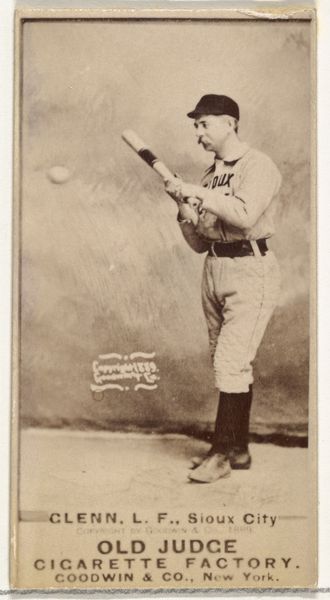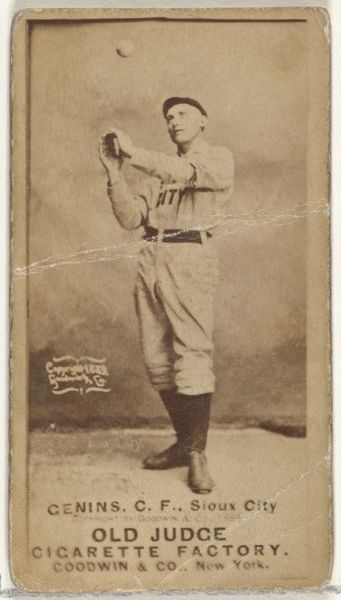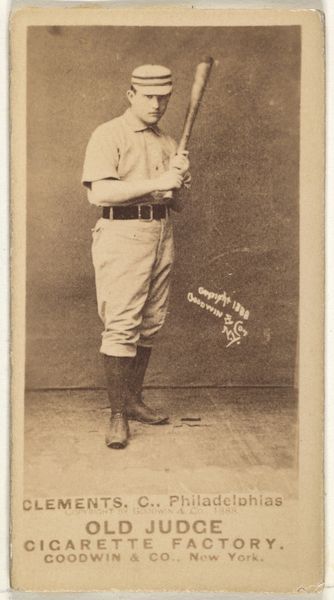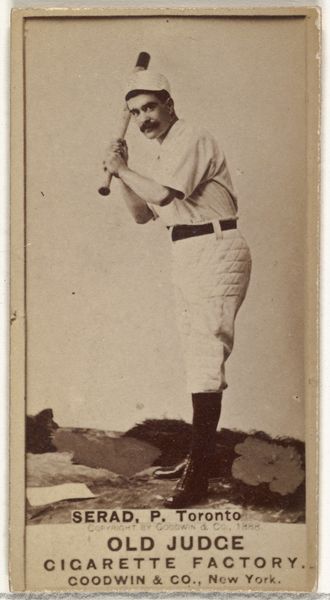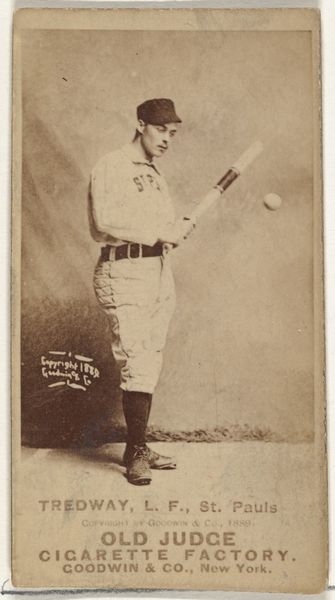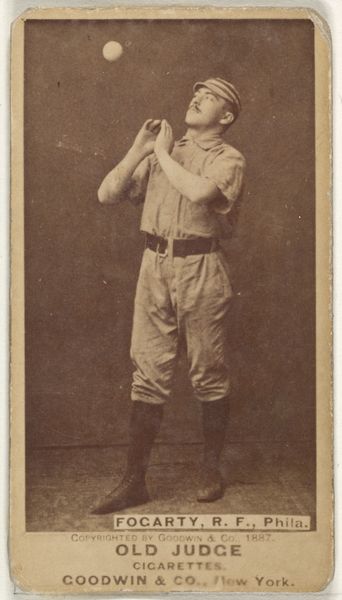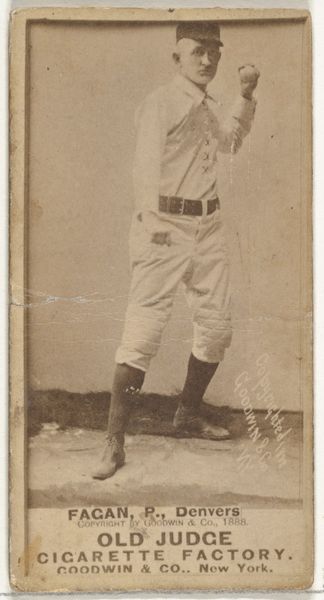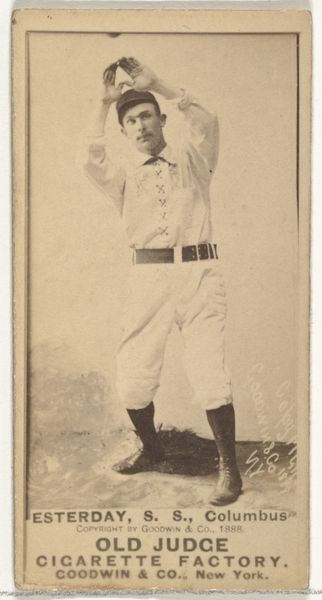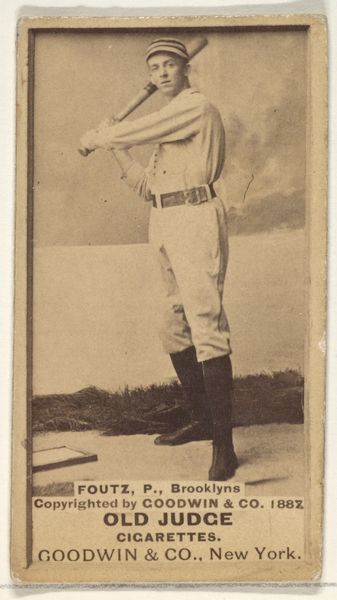
Ezra Ballou Sutton, 3rd Base, Milwaukee, from the Old Judge series (N172) for Old Judge Cigarettes 1888
0:00
0:00
print, photography
#
portrait
# print
#
baseball
#
charcoal drawing
#
photography
#
men
#
athlete
Dimensions: sheet: 2 11/16 x 1 3/8 in. (6.9 x 3.5 cm)
Copyright: Public Domain
Curator: What we're looking at here is a baseball card, part of the "Old Judge" series, which was quite popular in the late 1880s. This one features Ezra Ballou Sutton, a third baseman for Milwaukee, printed in 1888 by Goodwin & Company. Editor: Instantly, it makes me feel nostalgic for a time I never experienced, a simpler age almost. The sepia tones soften the world, don't they? He looks almost melancholy holding that bat. Is it just me? Curator: I think you’re picking up on the way photography was still being understood at the time. Remember, it wasn’t mass-produced imagery like we know it today; it was novel and, for many, still precious. Editor: Yes, the pose has an intentional feel to it, like an oil painting. The way he stands—so self-aware and yet still in his baseball stance. You can sense both the athlete and the posed "sitter," which lends the card this intriguing tension. But speaking of "mass produced", these were cigarette cards, right? Not exactly high art originally, but ubiquitous in their time. Curator: Exactly. Inserted into cigarette packs to stiffen the package and entice consumers, they’ve since become highly collectible. The mass appeal gave access to imagery to classes who previously wouldn't have been exposed, popularizing the players and teams along the way. Consider the portrait, though: how often would regular people get something like that of themselves back then? Editor: That's so interesting - a very proto version of celebrity endorsement. I wonder if Sutton saw much benefit in being on those cards. Do we know if the baseball players themselves were treated as well as we treat our famous sportspeople now? I mean, the contrast to the roughness of the sport… those dirty wool uniforms. It does paint an appealing picture. Curator: Player compensation was improving by then. This also marks baseball emerging as the sort of spectacle we know now. It shows you just how rapidly popular culture can be transformed, really. Editor: Well, I've certainly reevaluated baseball cards, and I love learning how everyday items end up telling a big cultural story. A perfect example of historical democratization by means of "low art," right? Curator: Absolutely, and a good reminder of how perceptions of art can change dramatically over time.
Comments
No comments
Be the first to comment and join the conversation on the ultimate creative platform.
